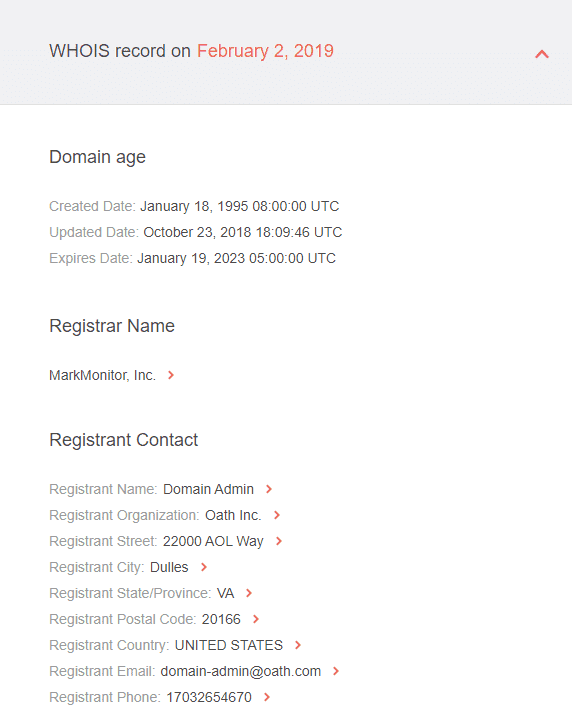Internet
Uncovering a domain’s past using domain name history search tools
Whether out of curiosity or necessity, uncovering the past of a domain is possible with WHOIS tools, the Internet Archive Wayback Machine, and advanced Googling skills.

Just a heads up, if you buy something through our links, we may get a small share of the sale. It’s one of the ways we keep the lights on here. Click here for more.
There are several reasons why you may want to look into a domain’s history. If you are buying a domain name for your blog or online shop, for instance, you would want to know everything you can about it, including its past. It won’t do you any good if the domain you purchase turns out to be associated with illicit activities at some point so it’s useful to learn about past registrants, dates of registrations, etc.
Take the fictional case of a charity that wants to own a particular domain name and, upon investigation, finds out that it has been linked to, for example, adult sites before. That would, of course, affect the decision, as this type of history could be detrimental to its reputation.
Some domains have had ties to blackhat search engine optimization (SEO), which is an unethical tactic to rank higher in search results. Google and other search engines have more likely banned domains associated with this practice, and their new owners could suffer from traffic and customer loss. Also, digging into a domain’s past is an effective way to avoid website blacklisting.
WHOIS Tools That Help Check a Domain’s History
The most reliable domain name history search tool is one that gets data from a vast WHOIS database with many records in store. WHOIS is a search and response protocol that allows anyone to “look up” information about domain names’ owners. There are several WHOIS lookup tools. Most web hosting providers offer the service, including GoDaddy and NameCheap. Even the Internet Corporation for Assigned Names and Numbers (ICANN) has its lookup tool.
Another example is WHOIS Lookup, which provides essential details about a web domain, including its registrant’s name, organization, and email address; creation and expiration dates; registrar details; and availability.
When it comes to a domain name’s history, however, a handy domain name history search tool is WHOIS History Search, which gives detailed and accurate ownership history information for a domain name.
Out of curiosity, we looked at the ownership history of yahoo[.]com, which was famously purchased by Verizon back in 2017 for around US$5 billion. The registrant, according to the WHOIS history search tool, is Yahoo! Inc. from the start until October 6, 2018, which is interesting to note since Verizon bought it in mid-2017.

The next update detected by WHOIS History Search was on February 2, 2019, when the registrant organization changed to Oath, Inc., although its registrant remained MarkMonitor, Inc.

Oath, Inc. is the digital and mobile media subsidiary of Verizon that also manages AOL.
WHOIS history search tools can be used to find domain details before the redaction of WHOIS contact data brought about by the implementation of the General Data Protection Regulation (GDPR).
The Wayback Machine
Now, if you want to see how a specific website looked like before, there’s always the Internet Archive. Yahoo, for example, didn’t change that much from 2016 to the present in terms of appearance.

The “Trending Now” section is still in the right sidebar, although the site’s categories moved from the left sidebar to the top.
On a more serious note, the Wayback Machine can also be used to investigate potential partners, third-party providers, and even clients, so you’ll know who you’re dealing with. Historians and researchers also use it as a way to preserve digital artifacts.
Whether out of curiosity or necessity, uncovering the past of a domain is possible with WHOIS tools, the Internet Archive Wayback Machine, and advanced Googling skills.
Editor’s Note: Jonathan Zhang is the founder and CEO of Threat Intelligence Platform (TIP) — a data, tool, and API provider that specializes in automated threat detection, security analysis, and threat intelligence solutions for Fortune 1000 and cybersecurity companies.
Have any thoughts on this? Let us know down below in the comments or carry the discussion over to our Twitter or Facebook.
Editors’ Recommendations:
- How the Internet has changed in the past 10 years
- Data protection & Internet security: How to stay safe online in 2020
- The guy who invented the World Wide Web wants to save the internet – here’s how
- Which residential internet providers in Los Angeles are the best?































